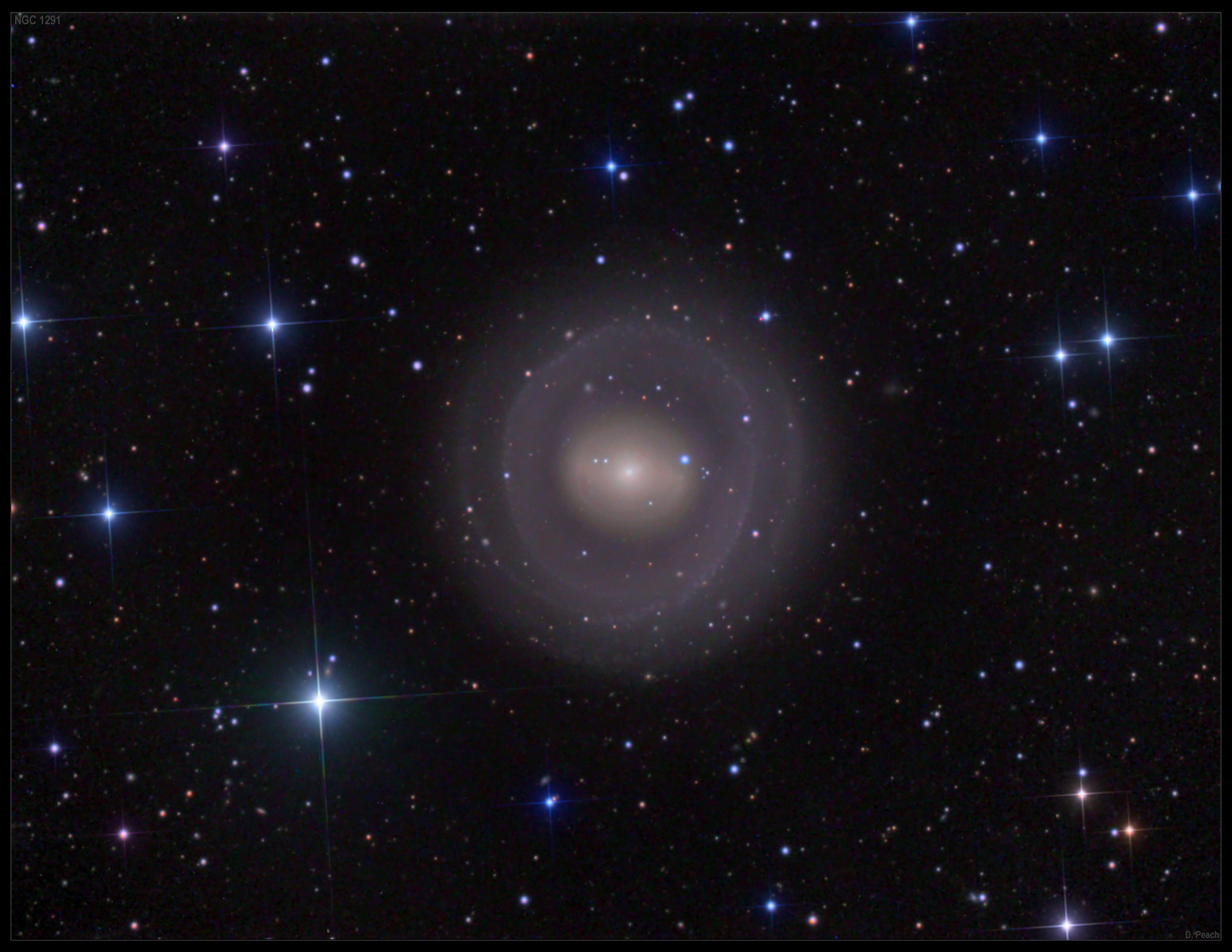I’ve seen a lot of lovely images from the Spitzer Space Telescope. It takes infrared images and can see the fine structure of galaxies, where stars are forming and where they are not forming. The photos paint a picture of the history and evolution of a galaxy. The latest image released last week shows some amazing features.

The Cyan light in the image is a combination of blue and green coloured light representing infrared wavelengths of light at 3.4 and 4.5 microns. This wavelength shows the stellar population in the galaxy. The red light is representing dust features that glow brightly in a wavelength of 8 microns.

The most amazing and peculiar feature visible in the images is the giant dusty ring on the outer edges of the galaxy. This dusty ring is a result of newly formed stars that are heating up their surroundings, causing them to glow in infrared light. Without any dust closer to the bulge of the galaxy, no new stars are forming near the centre.
The Galaxy, NGC 1291, is 12 Billion years old and is located 33 Million light years away in the constellation Eridanus. The galaxy is classed as a barred spiral, due to the bar across its central bulge, visible as an ‘S’ shape in the infrared images.

As a galaxy ages, the star formation moves from the gas-rich central bulge to the outskirts of the galaxy and becomes driven by resonances of spiral density waves originating from the bulge. This galaxy is a textbook example of that, showing massive star formation in the outskirts and relatively little activity nearer to the centre.
Looking at galaxies in many different wavelengths gives us an idea of their history, whether they’ve collided with other galaxies, and how they will evolve in the future. Seeing spiral galaxies face on gives us a full picture of the galaxy and allows us to gather more information about its evolution. Studying the lives of galaxies gives us an idea of how our own Milky Way Galaxy, and the universe at large, has evolved and how it will continue to change in the future.
